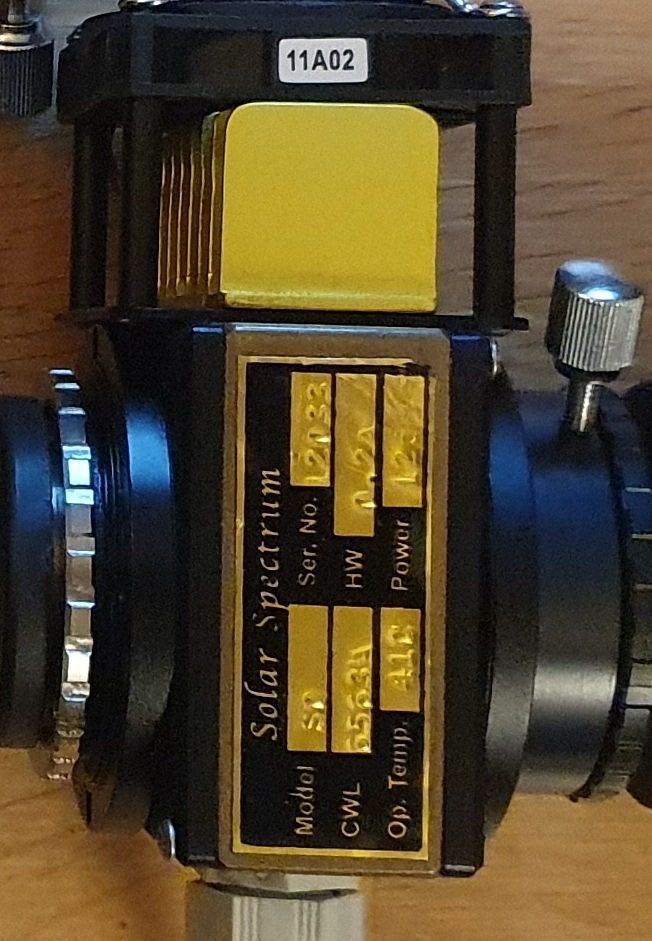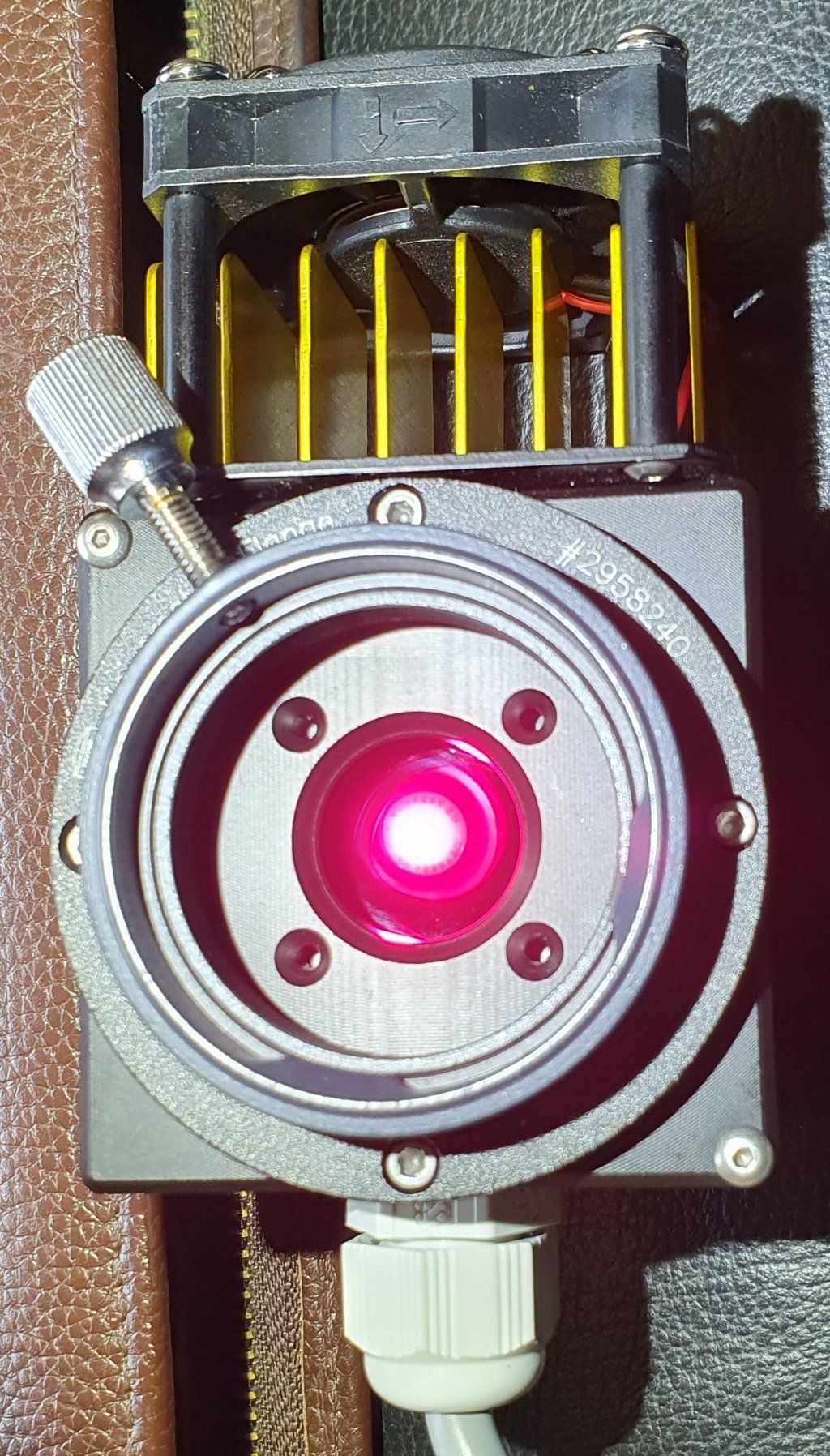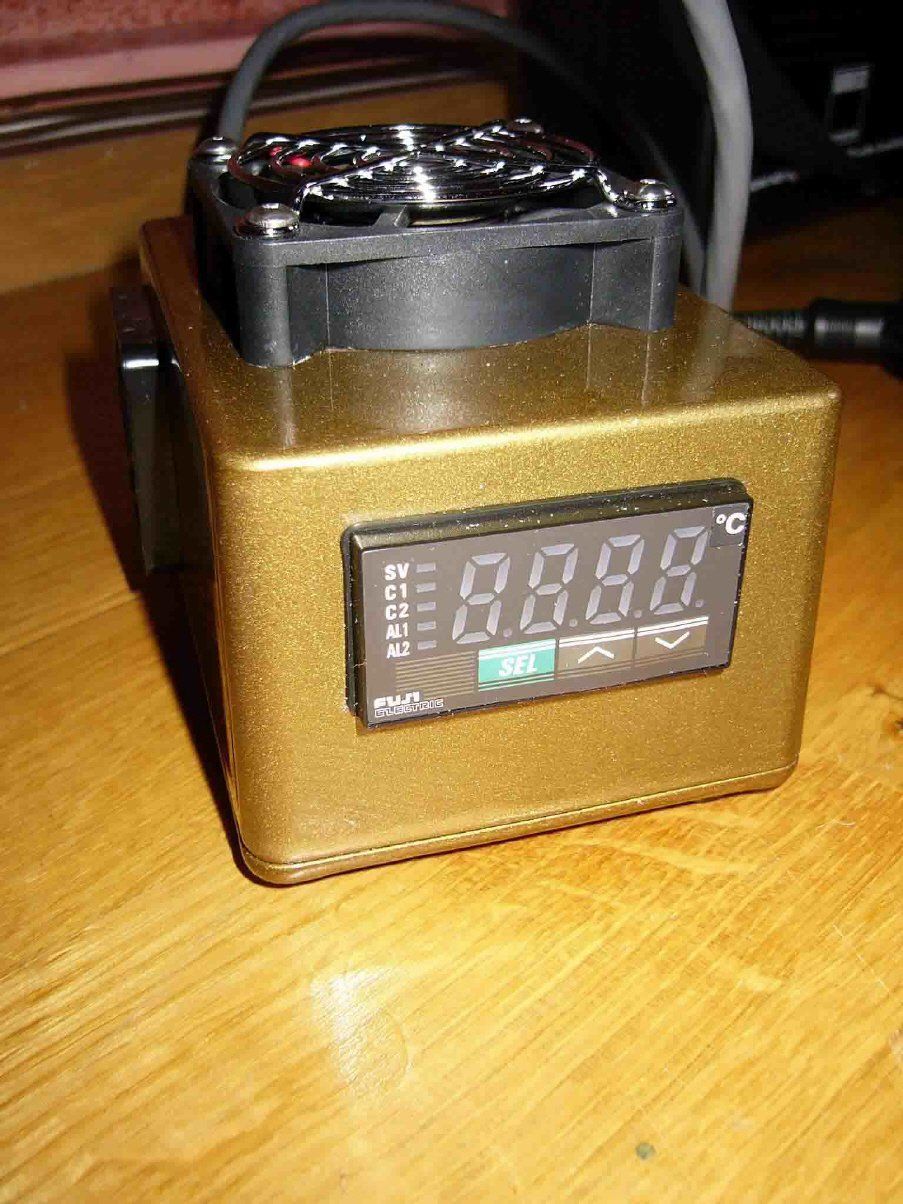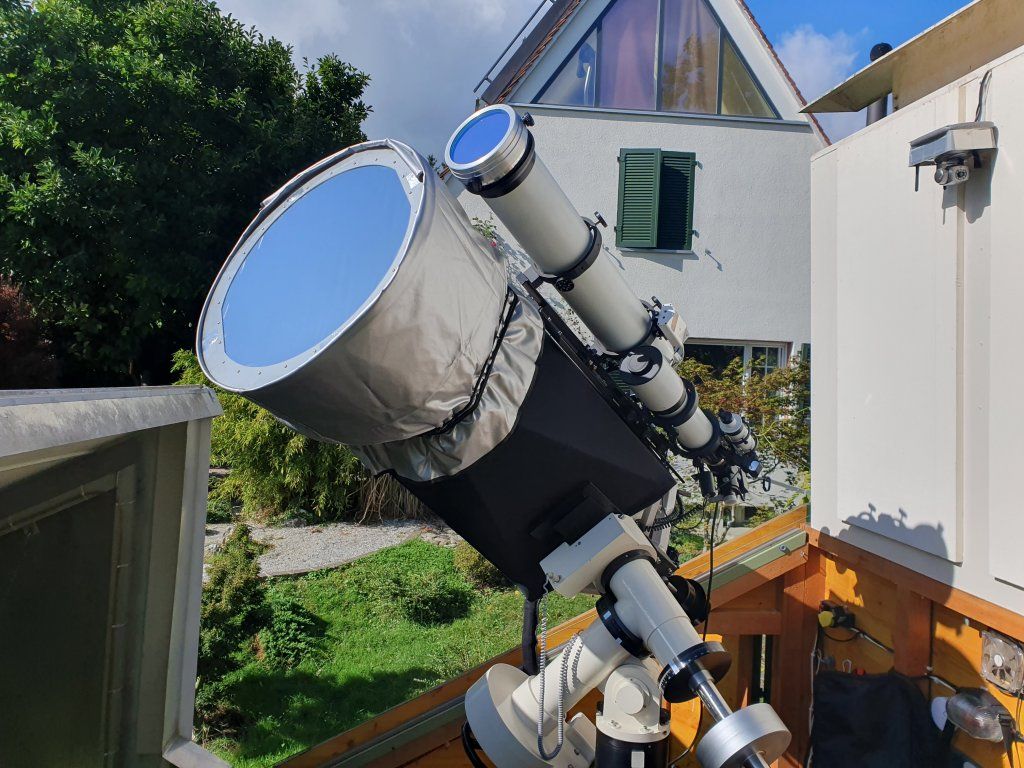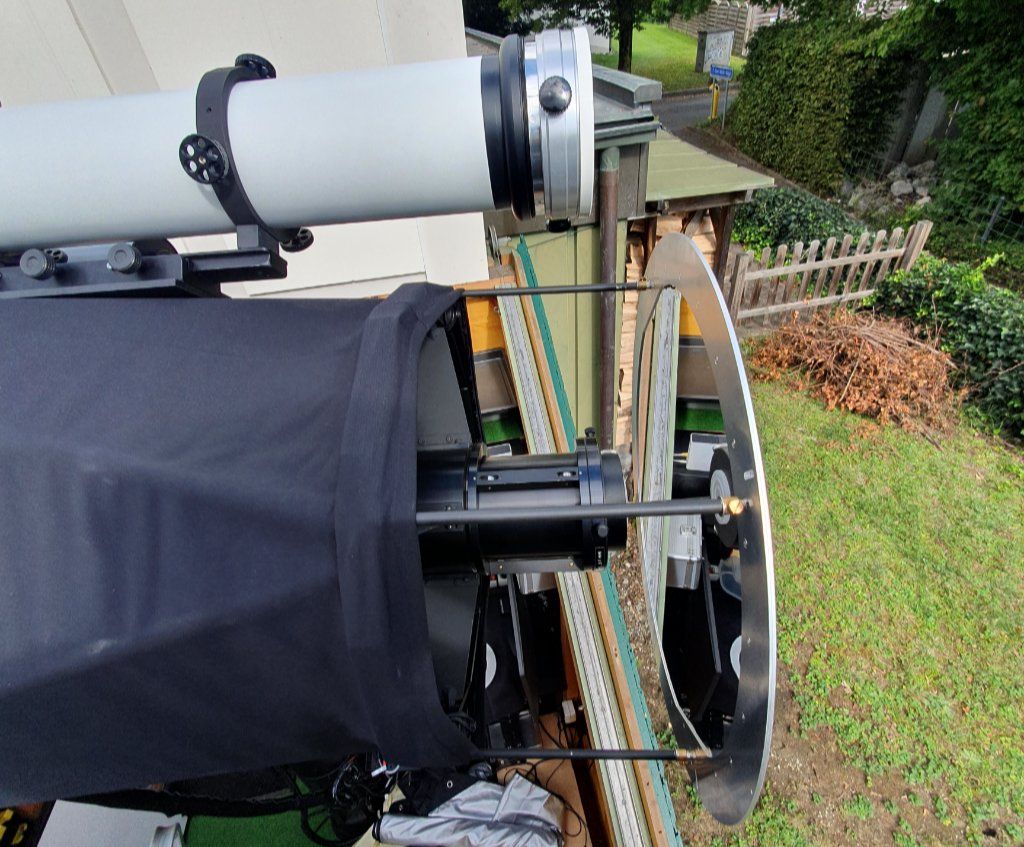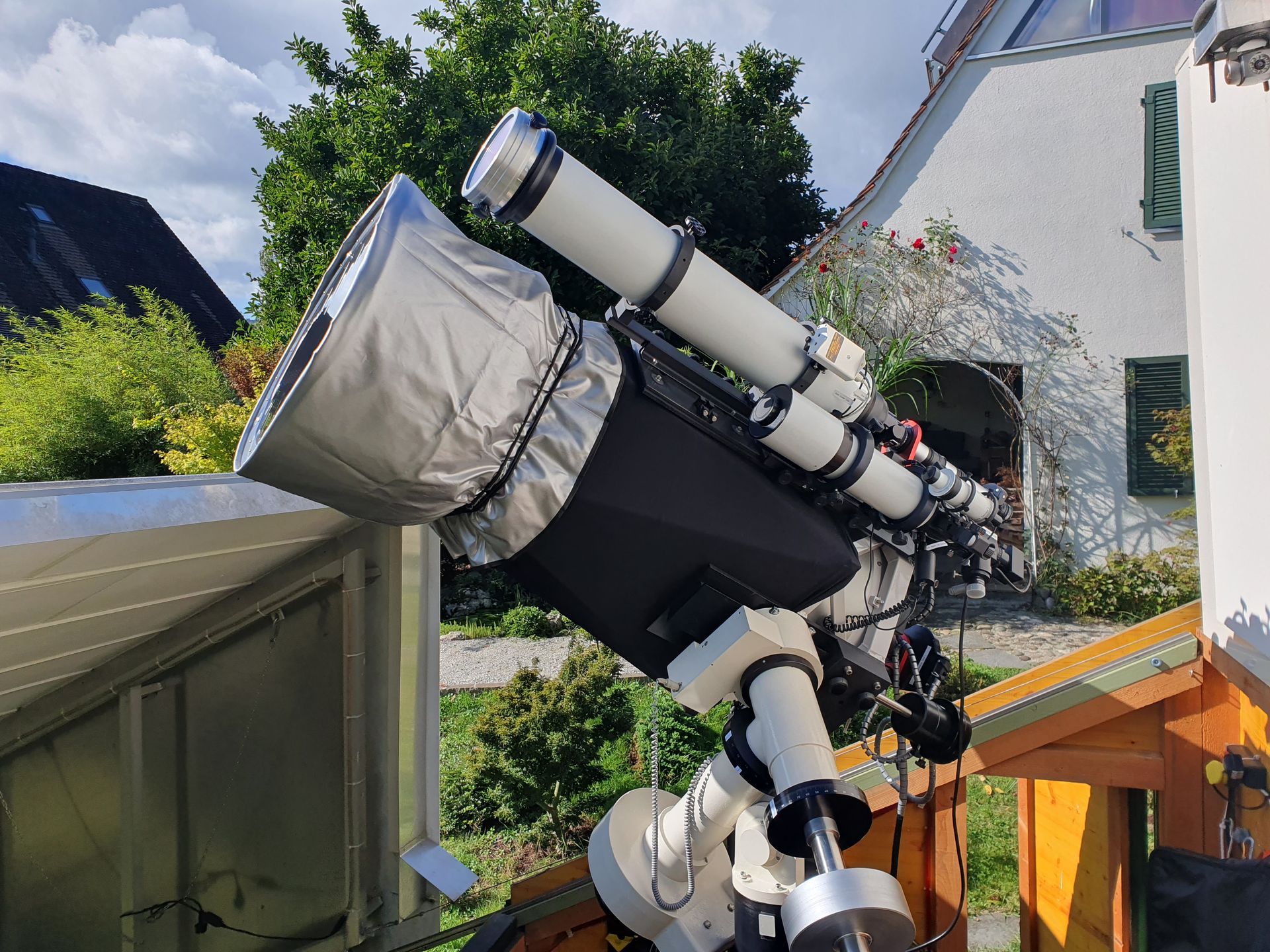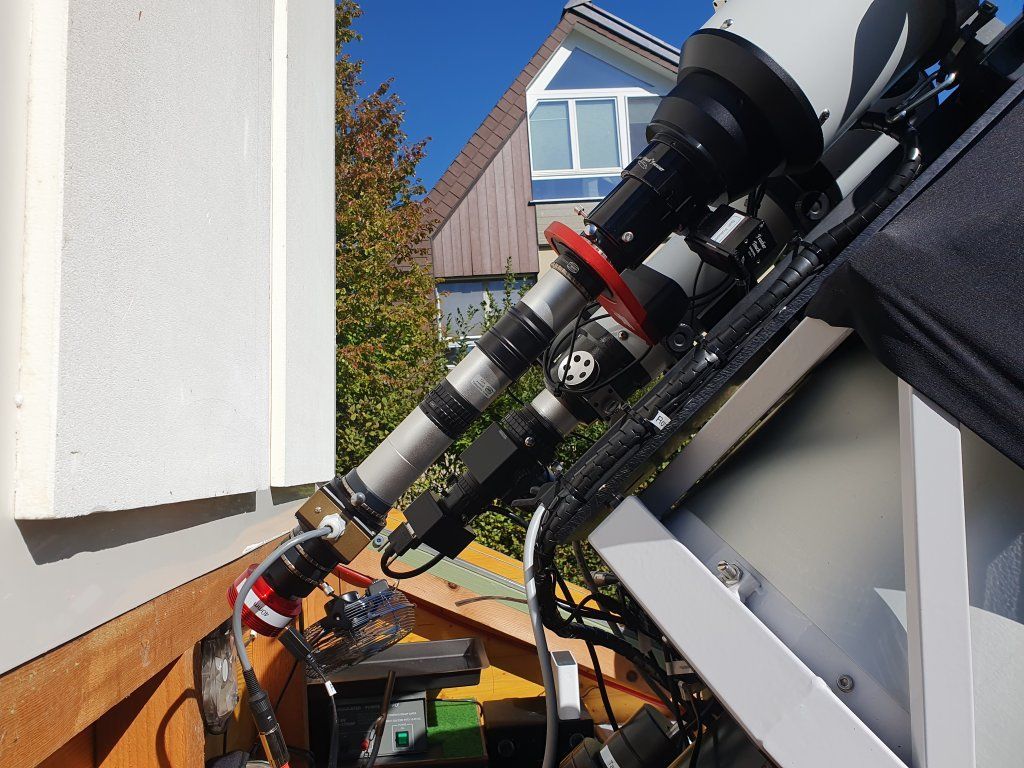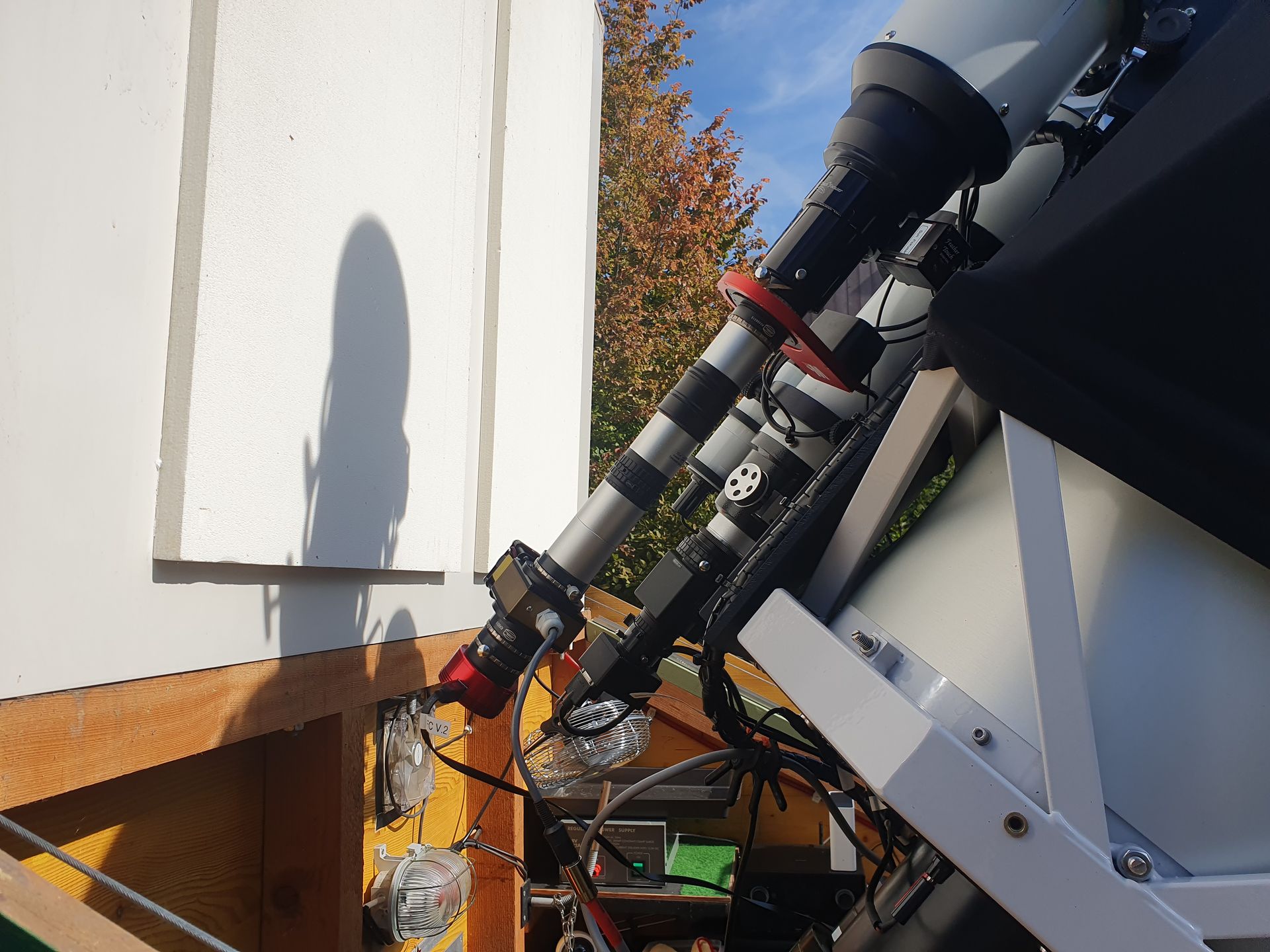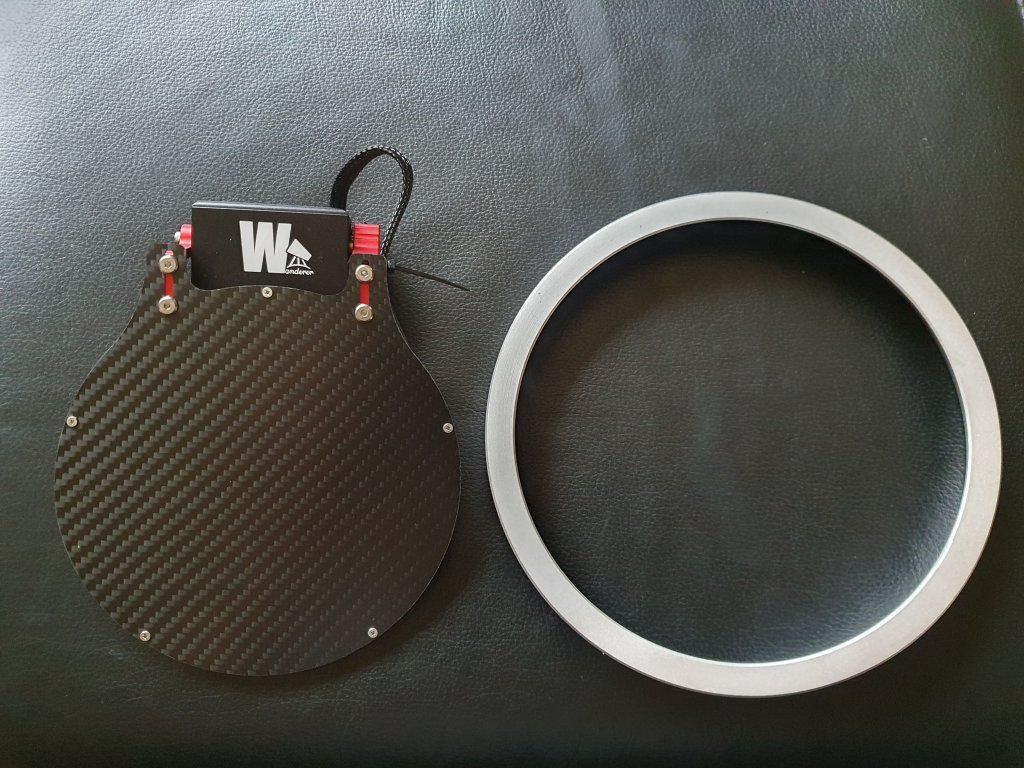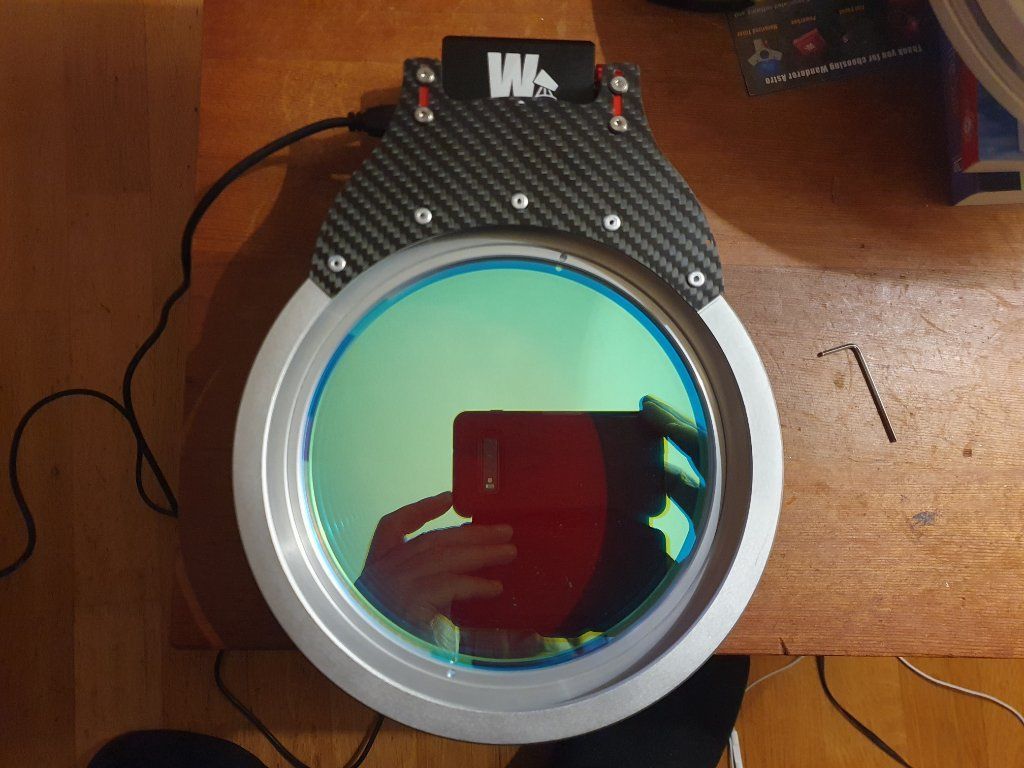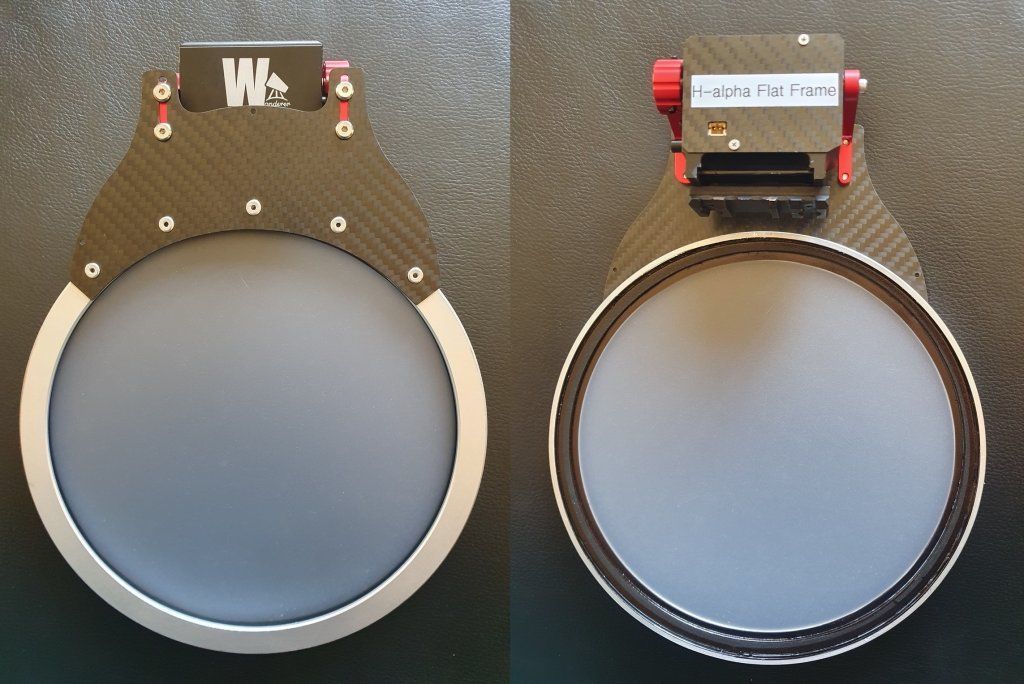H-alpha Solar
(ED150 telescope)
The equipment is based on a modified Skywatcher Evostar ED150 f8 telescope, with a Feathertouch focuser, a D-ERF and Solar Spectrum Filter SO-1 (19mm) 0.2 A
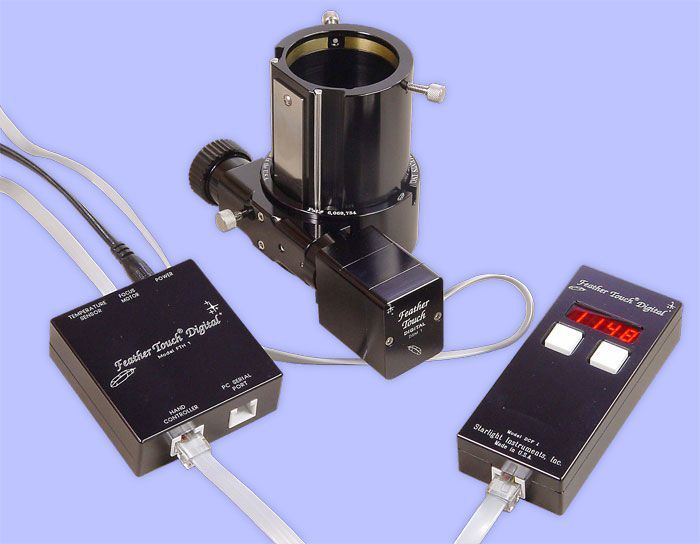
The original focuser was replaced by a stiff feathertouch version. The very narrow SolarSpectrum filter of 0.2 A doesn`t allow any flexture in the light pass of the whole optic system. Otherwise the highly conrast may be limited to only a small area of the filter. The focuser was motorized and equipped with a digital controlbox as well linked to the observatory personal computer/ MaximDL5 software via a serial port

The front of the converted Evostar ED150 f8 is equipped with a special energie rejection filter from Baader, the D-ERF.
Its main purpose is to reject the infrared rays of the sun, which normally heat the optical system and to pass only the red wavelenghts around the important H-alpha.
The UV light which may destroy the Solar Spectrum Filter SO-1 (19mm) 0.2A is also blocked.
The tube seeing is reduced and the contrast of the H-alpha picture is increased. The filter is combined with two apertures 150mm or 120mm, in order to adapt the ED optic to the various telezentric systems (TZ-3 or TZ-4) and the required optimal focal lenghts.
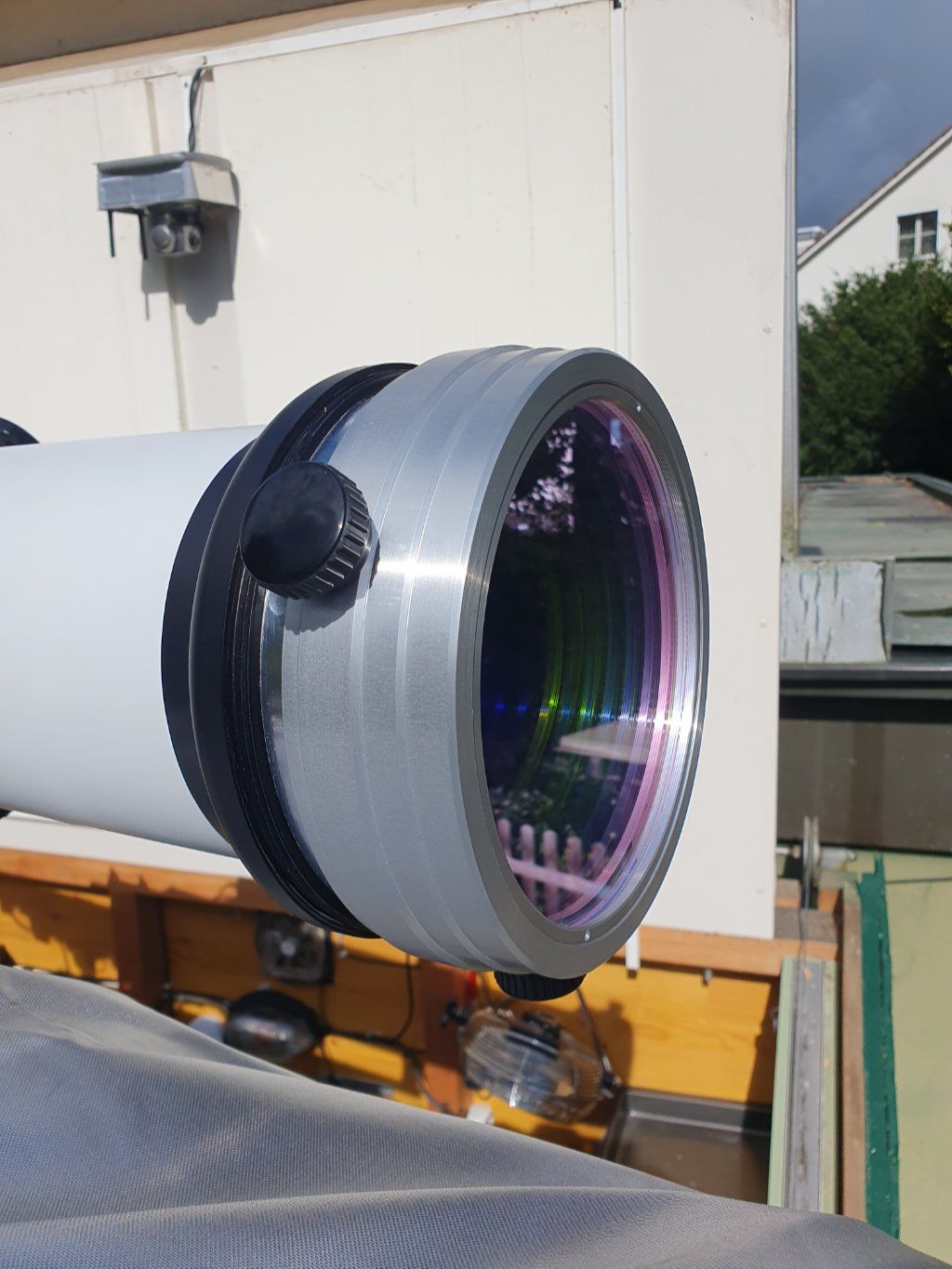
D-ERF full aperture 150mm (optimal for TZ-4) -> f32/ 4800mm
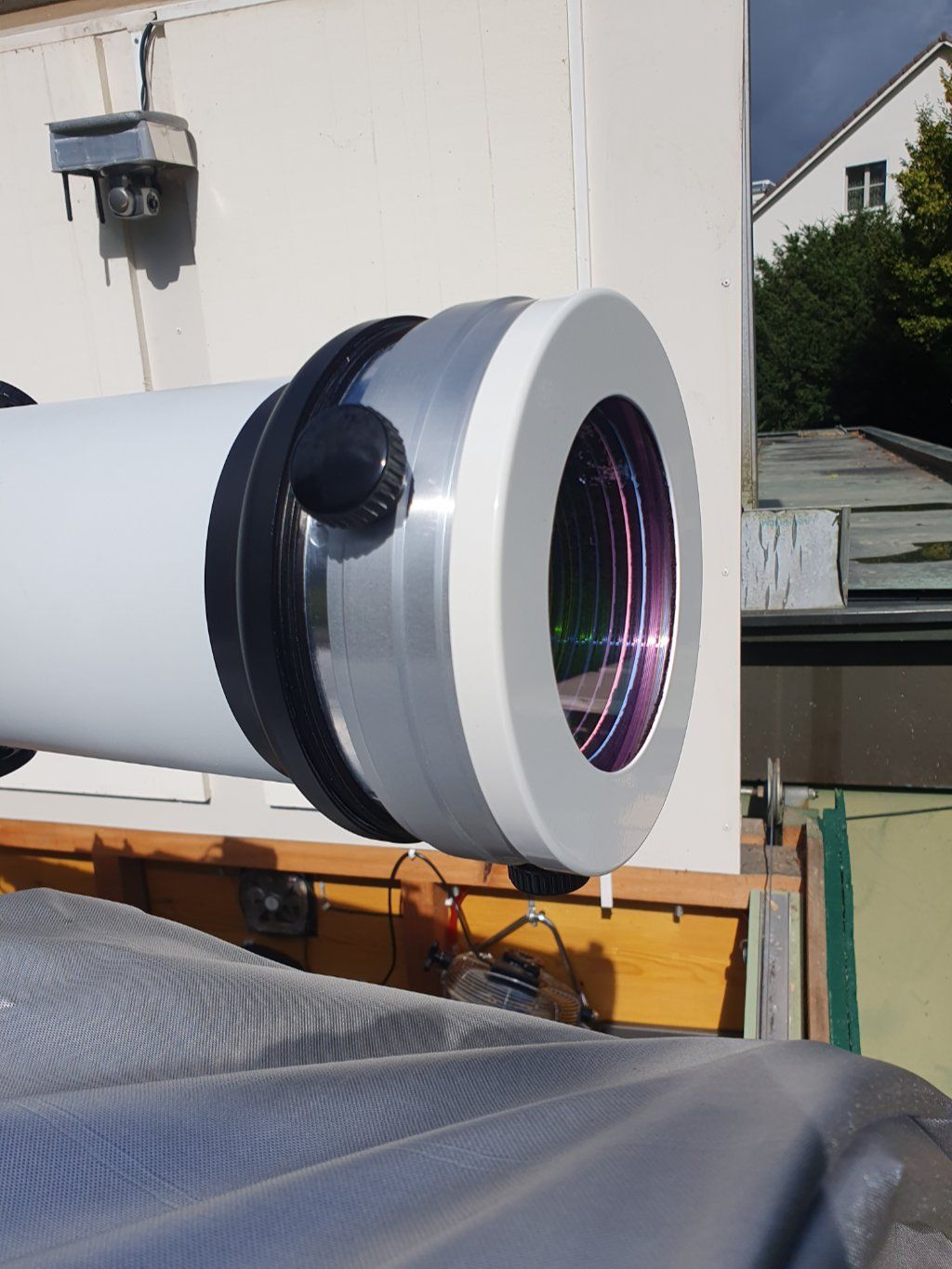
D-ERF reduced aperture 120mm (optimal for TZ-3) -> f30/ 3600mm
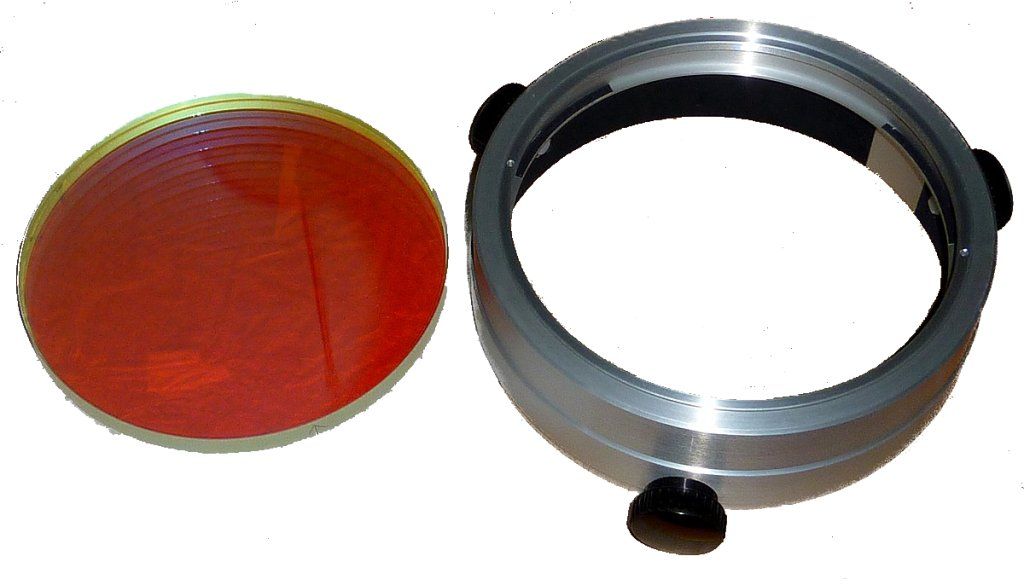
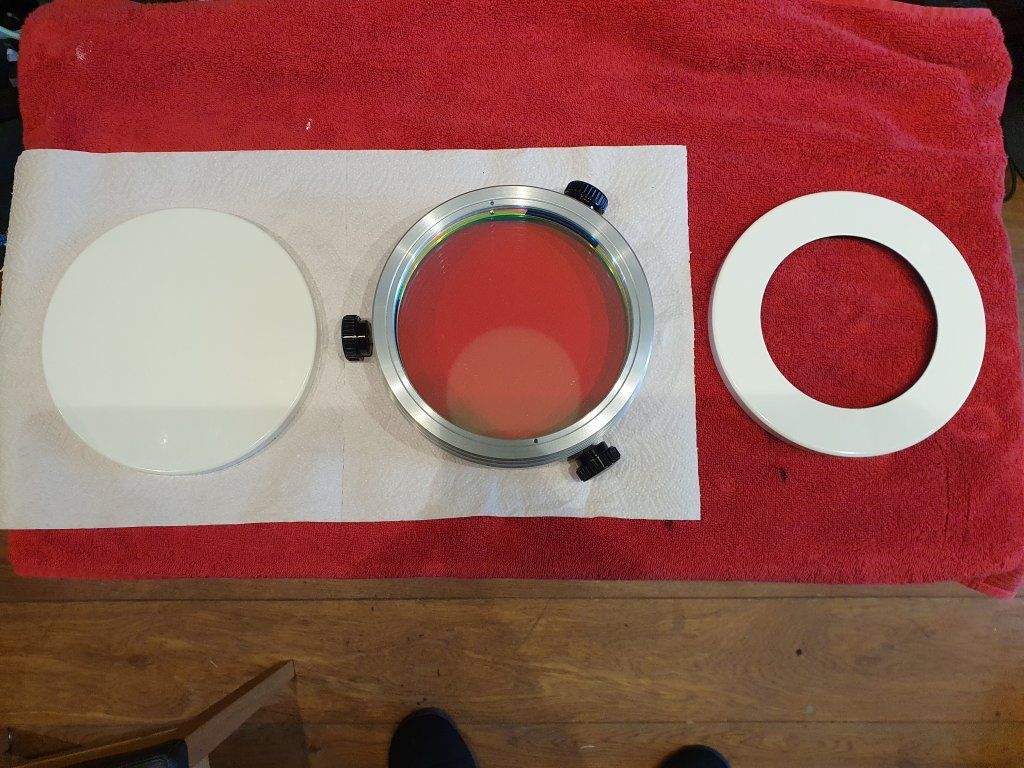
D-ERF 160mm plus TS frame
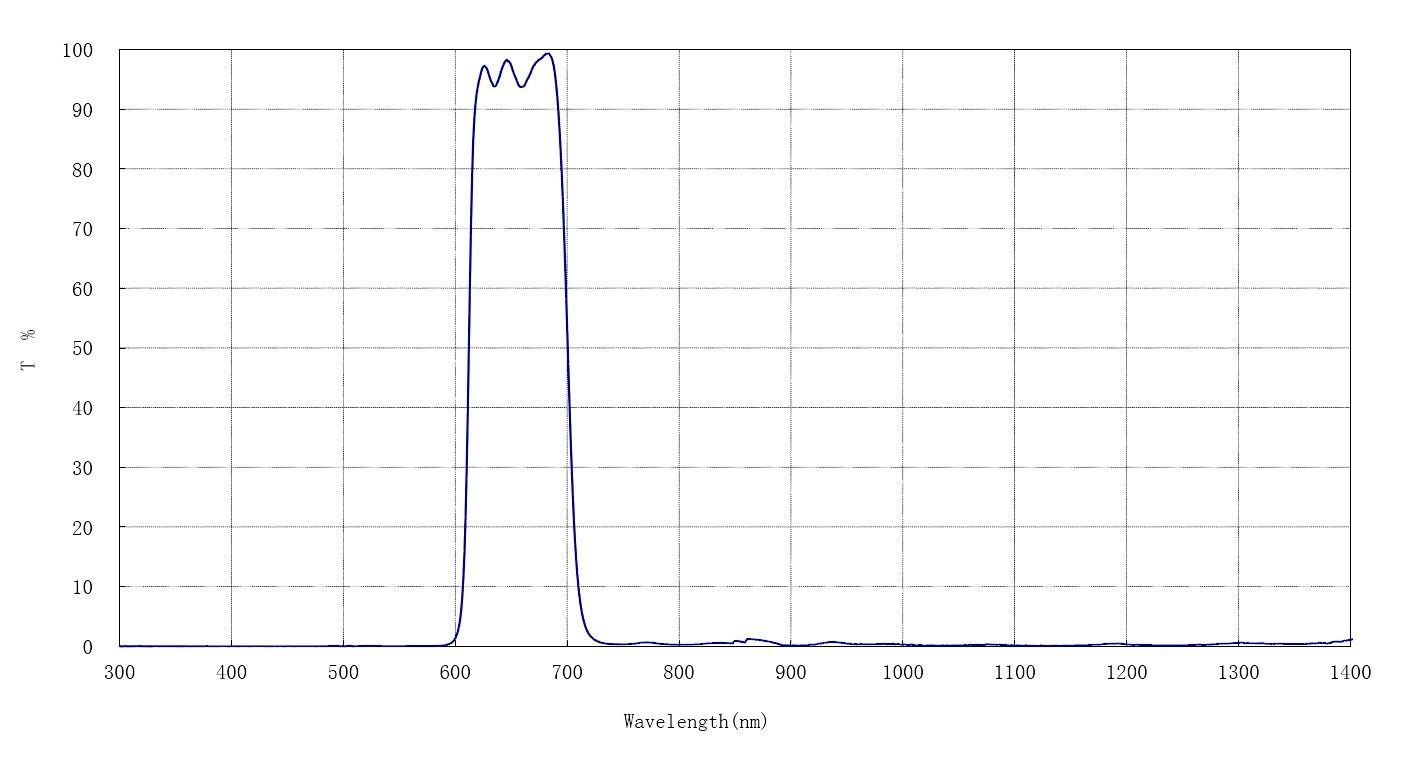
D-ERF 160mm plus TS frame
D-ERF
Special dielectric energy rejection filter (IR/UV Cut) by Baader Planetarium, Germany
https://www.baader-planetarium.com/de/sonne/h-alpha/d-erf-energieschutzfilter-(75---180-mm).html
TS frame made by Telescope Express Ransburg Germany
Without this filter you will damage the H-alpha Filter
Solar Spectrum Filter SO-1 (19mm) 0.2 A plus Controller
No Fabry-Perot-Solar-Filter must be subjected to “freeze all though”. The warranty may be void if damages are found to be a result of freezing.
Such an elaborate filter is calibrated to be used at a certain working temperature. The immersion oil which enables the large stack of Polarizers and optical elements to perform as one solid block of glass, free of internal reflections, may become “greasy”. As a result, the crystallizing liquid increases it's volume and forces optical surfaces within the optical stack to become apart, so that air can creep between the optical elements. The coatings applied to the 1/200 lambda plane etalen as well as the polarizers are subjected to enormous stress which can lead to forced aging.
At all times when any H-alpha Filter is not in use, it should be stored in a dry environment within a temperature range between +4°C to 36°C.
A dry box with including a generous pack of silica gel or zeolite is recommended.
Manuals: copy rights Baader Planetarium GmbH Mammendorf, Germany
Bright Field Solar
(ASA 400 telescope)
H-alpha automated Flat Panel self made, based on Wanderer Cover Mini Flat Panel V3
The fully automated Cover Flat Panel V3 mini mounted with a Finder adapter on the heavy aluminum D-ERF frame -Made in Himmelwarte-
The Flat Panel in action, triggered by the Wanderer Software.
